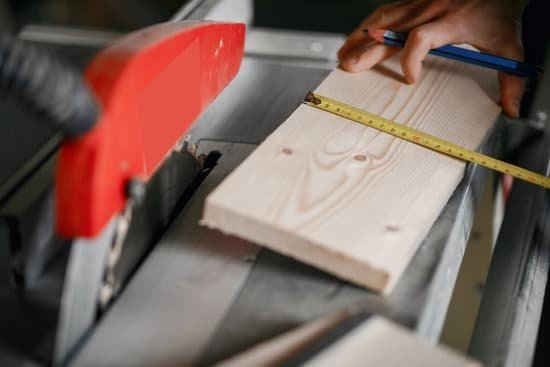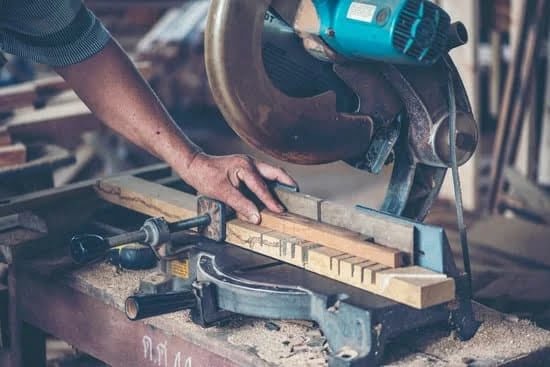Are you wondering how to outfit a woodworking shop? Having a well-equipped woodworking space is essential for both amateur hobbyists and professional woodworkers. From safety considerations to optimizing efficiency, outfitting a woodworking shop properly can greatly enhance the overall woodworking experience. In this article, we will discuss the importance of having a well-equipped woodworking shop and share the benefits of outfitting it properly.
When it comes to setting up a woodworking shop, one of the first steps is assessing the available space. This involves evaluating the layout, considering available square footage, and optimizing the workspace for maximum efficiency and productivity. Additionally, we will provide tips on how to select and set up workbenches for different tasks, as well as strategies for organizing and storing tools and materials efficiently.
Of course, no woodworking shop is complete without essential tools. We will provide a list of must-have tools for a well-equipped woodworking shop along with detailed descriptions and uses of each tool. Safety in the workshop is also paramount, so we will emphasize the importance of prioritizing safety equipment and guidelines for using it. Stay tuned as we delve into these essential aspects of outfitting a woodworking shop in detail.
Assessing the Space
When it comes to outfitting a woodworking shop, one of the first things to consider is the available space. Whether you have a dedicated area in your garage or an entire standalone workshop, it’s essential to assess the space carefully to make the most of it. Start by taking measurements and evaluating the layout of the area. Consider factors such as natural light, electrical outlets, and any existing storage or work surfaces.
Once you have a good understanding of the space, you can then optimize the layout for maximum efficiency and productivity. This may involve rearranging existing features, adding storage solutions, or even building custom workbenches and tool racks. By strategically organizing your woodworking shop, you can create a clear workflow that allows you to move seamlessly from one task to another without wasting time searching for tools or materials.
In addition to physical layout considerations, don’t forget about creating comfortable and functional work areas within your woodworking shop. Adequate lighting, ventilation, and access to power are also crucial aspects to address when setting up your space for woodworking projects.
| Space Assessment Tips | Optimizing Layout |
|---|---|
| Take measurements of the space | Rearrange existing features |
| Evaluate layout and existing features | Add storage solutions |
| Consider natural light and electrical outlets | Build custom workbenches and tool racks |
Essential Tools for a Woodworking Shop
When it comes to outfitting a woodworking shop, one of the most crucial aspects is having the right tools for the job. Whether you are a hobbyist or a professional woodworker, having essential tools in your workshop is essential for creating quality pieces and ensuring efficient work processes. Here’s a guide on how to outfit a woodworking shop with must-have tools that will enable you to tackle various projects with ease.
A good set of chisels is indispensable for any woodworking shop. Chisels come in different sizes and shapes and are used for cutting, shaping, and carving wood. A quality set of chisels will allow you to create intricate details and smooth finishes on your woodworking projects.
Next on the list of essential tools is a reliable hand plane. Hand planes are used for shaping, smoothing, and removing imperfections from wood surfaces. They come in various sizes and styles, each serving a specific purpose in woodworking. A well-tuned hand plane can make quick work of leveling surfaces and creating perfect joints.
Another must-have tool for any woodworking shop is a good-quality table saw. This versatile power tool is essential for making straight cuts, bevel cuts, miter cuts, and rabbets in wood. It is an indispensable tool for dimensioning lumber and cutting large pieces of wood accurately.
In addition to these basic tools, other essentials include a quality set of screwdrivers, clamps in various sizes, measuring and marking tools such as a combination square and marking gauge, as well as sharp hand saws for precise cutting. By investing in these essential tools, you can effectively outfit your woodworking shop for a wide range of projects while ensuring that you have the necessary equipment to produce high-quality work.
Safety First
Prioritizing safety in a woodworking shop is essential for preventing accidents and ensuring a productive and enjoyable woodworking experience. Here are some important tips for maintaining a safe work environment:
- Always wear appropriate safety gear, including safety goggles, ear protection, and a dust mask, to protect yourself from potential hazards such as flying debris, loud noises, and harmful dust particles.
- Familiarize yourself with the safety features of each tool and equipment in your woodworking shop. Follow manufacturer guidelines for usage and maintenance to prevent malfunctions or accidents.
- Keep your work area clean and organized to minimize the risk of tripping over tools or materials. Clear any sawdust or wood shavings regularly to prevent slipping hazards.
- Invest in quality safety equipment such as push sticks for table saws, featherboards, and blade guards to minimize the risk of accidental injuries while operating power tools.
Properly outfitting your woodworking shop with the right safety equipment can help create a secure environment for pursuing your woodworking projects without compromising on safety.
By prioritizing safety in your woodworking shop, you can enjoy peace of mind while working on your projects and reduce the risk of accidents or injuries. With the right knowledge and equipment, you can create a safe and productive environment where you can fully indulge in your passion for woodworking.
Setting Up Workbenches and Storage
One of the most crucial aspects of outfitting a woodworking shop is setting up workbenches and storage efficiently. Proper workbenches provide a sturdy and stable surface for various woodworking tasks, while effective storage solutions ensure that tools and materials are organized and easily accessible. When it comes to setting up workbenches, consider the type of woodworking projects you will be doing and the space available in your shop.
For example, if you plan on working on larger projects, such as furniture making, you may need a larger workbench. On the other hand, if space is limited, a smaller, mobile workbench with built-in storage could be a more practical option.
In addition to workbenches, efficient storage is essential for keeping your woodworking shop tidy and functional. Wall-mounted tool racks or pegboards can help keep hand tools within arm’s reach while maximizing floor space. Furthermore, investing in cabinets, shelves, and drawers for storing power tools, hardware, and supplies can help maintain an organized workspace. By effectively utilizing vertical space in your shop, you can create ample room for maneuvering while working on projects.
When outfitting your woodworking shop with workbenches and storage solutions, it’s important to strike a balance between functionality and flexibility. Adaptable workstations that can be customized based on the specific requirements of each project can enhance productivity and creativity. Additionally, organizing your tools and materials in a systematic manner will save time by eliminating the need to search for items during a project.
| Workbench Options | Storage Solutions |
|---|---|
| Consider different sizes based on available space | Wall-mounted tool racks/pedboards |
| Mobile workbenches with built-in storage | Cabinets/shelves/drawers for power tools & supplies |
| Adjustable height workbenches for versatility | Utilizing vertical space effectively |
By carefully planning the setup of your workbenches and choosing suitable storage solutions early on in the process of outfitting a woodworking shop, you can create an environment that fosters creativity and efficiency in every project. Whether you’re a hobbyist woodworker or a professional craftsman, having well-organized workstations tailored to your specific needs will significantly enhance your woodworking experience.
Power and Dust Collection
The Importance of Quality Power Tools
Having the right power tools can make a significant difference in the efficiency and precision of your woodworking projects. When outfitting a woodworking shop, it’s essential to invest in high-quality power tools that will withstand heavy usage and deliver consistent performance. From table saws and jointers to planers and routers, each tool plays a unique role in the woodworking process. Consider factors such as motor power, cutting capacity, and durability when selecting power tools for your shop.
Reliable Dust Collection Systems
Woodworking generates a significant amount of dust and debris, which can pose health hazards and create a messy working environment if not properly managed. Integrating an effective dust collection system in your woodworking shop is crucial for maintaining cleaner air quality and keeping the workspace tidy. Whether you opt for a central dust collector with ductwork or portable dust extractors for individual machines, prioritize systems with strong suction power and efficient filtration to capture fine particles.
Choosing the Right Equipment for Your Woodworking Shop
When considering power tools and dust collection systems for your woodworking shop, it’s important to assess your specific needs based on the scale of your projects, available space, and budget constraints. Research different brands and models, read customer reviews, and consult with experienced woodworkers to make informed decisions. By carefully selecting the right equipment for your woodworking shop, you can ensure smoother operations, better safety measures, and higher quality output in your woodworking endeavors.
Additional Equipment and Accessories
Woodworking enthusiasts know that having the essential tools is just the beginning of outfitting a woodworking shop. Once you have the basics covered, it’s time to consider additional equipment and accessories that can take your woodworking shop to the next level. From specialty tools to accessories that enhance efficiency and precision, here are some recommendations for outfitting your woodworking shop with the extras that make a big difference.
Specialty Tools
In addition to the essential hand tools and power tools, there are several specialty tools that can greatly expand the capabilities of your woodworking shop. For example, a biscuit joiner is invaluable for creating strong, clean joints in wood while a router table provides added versatility for shaping and finishing edges. Other specialty tools to consider include a dovetail jig for creating intricate dovetail joints and a lathe for turning wood into beautiful decorative pieces.
Accessories for Precision and Efficiency
To ensure precise measurements and accurate cuts, investing in quality measuring devices such as calipers and digital angle gauges can be extremely beneficial. Clamps and vises are essential accessories for securing workpieces during cutting, shaping, and assembly. Additionally, consider adding dust collection attachments to power tools to maintain a clean and healthy workspace.
Workshop Organization Solutions
Beyond storing hand tools in toolboxes or pegboards, consider implementing storage solutions tailored to specific types of materials used in woodworking. Lumber racks, hardware organizers, and bins for small parts are all useful additions to keep your workshop neat and organized.
By investing in specialty tools, precision accessories, and efficient workshop organization solutions, you can elevate the functionality of your woodworking shop to new heights.
Each of these components plays an important role in creating a safe, efficient working environment conducive to quality craftsmanship while providing an enjoyable experience during woodworking projects.
Budgeting and Shopping Tips
When it comes to outfitting a woodworking shop, one of the most important aspects to consider is budgeting for the necessary tools and equipment. Without proper planning, it’s easy to overspend or miss out on crucial items that can enhance the functionality of your shop. Here are some tips for budgeting and shopping for your woodworking needs:
1. Set a budget: Before you start purchasing tools and equipment, take the time to set a realistic budget for outfitting your woodworking shop. Consider the essential items you need, as well as any additional equipment or accessories that may be beneficial.
2. Prioritize purchases: Once you have your budget in place, prioritize your purchases based on your immediate needs. For example, if you’re just starting out, focus on acquiring essential hand tools and power tools before investing in specialty equipment.
3. Shop smart: Research different brands and suppliers to find the best deals on quality tools and equipment. Look for sales, discounts, and promotions that can help stretch your budget further without sacrificing quality.
4. Consider pre-owned options: In some cases, gently used tools and equipment can be a cost-effective alternative to brand new items. Check out local woodworking communities, online marketplaces, and classified ads for pre-owned options that are still in good condition.
5. Invest in quality: While it’s important to stick to your budget, investing in high-quality tools and equipment can save you money in the long run by reducing the need for frequent replacements or repairs.
By carefully budgeting and shopping for your woodworking shop needs, you can create a well-equipped space without breaking the bank. With the right approach, you can find great deals on essential tools while also leaving room in your budget for additional equipment as your woodworking skills grow.
Conclusion
In conclusion, outfitting a woodworking shop is a crucial step for any woodworking enthusiast or professional. Having a well-equipped space not only makes the work more enjoyable but also significantly improves efficiency and productivity. By carefully assessing the available space, investing in essential tools, prioritizing safety, setting up efficient workbenches and storage, and selecting quality power tools and dust collection systems, woodworkers can create a shop that meets their needs and enhances their craft.
When it comes to outfitting a woodworking shop, it’s essential to prioritize safety above all else. Investing in the right safety equipment and following recommended guidelines for using it can prevent accidents and ensure peace of mind while working with power tools. Additionally, optimizing the layout of the shop for maximum efficiency is crucial for smooth workflow and successful projects.
As woodworking projects vary in complexity and scale, it’s important to consider additional equipment and accessories that can enhance the functionality of the shop based on specific project needs or personal preferences. With a well-thought-out budgeting plan and some savvy shopping tips, woodworkers can find quality tools and equipment without breaking the bank, making outfitting a woodworking shop an achievable goal for anyone dedicated to their craft.
Ultimately, with careful planning and investment in the right tools and equipment, creating the woodworking shop of your dreams is within reach.
Frequently Asked Questions
What Are 5 Things You Should Not Do in the Woodshop?
In the woodshop, it is important not to operate machinery without proper training and supervision. It’s also crucial to avoid wearing loose clothing or jewelry that could get caught in equipment. Additionally, never rush through a project and always follow safety guidelines for handling tools and materials.
How Do You Layout a Woodshop?
When laying out a woodshop, consider the workflow and ensure there is sufficient space for each tool and workstation. It’s essential to arrange machines so that raw materials can easily move through the cutting and shaping process. Additionally, keep safety in mind by providing clear pathways and keeping emergency equipment easily accessible.
What Do You Wear to a Wood Shop Class?
When attending a woodshop class, it’s important to wear appropriate attire for safety reasons. This includes closed-toe shoes to protect your feet from falling objects or sharp tools. Avoid loose clothing that could get tangled in machinery, and consider wearing protective gear like safety glasses and ear protection when working with loud or potentially hazardous equipment.

Hi everyone! I’m a woodworker and blogger, and this is my woodworking blog. In my blog, I share tips and tricks for woodworkers of all skill levels, as well as project ideas that you can try yourself.





